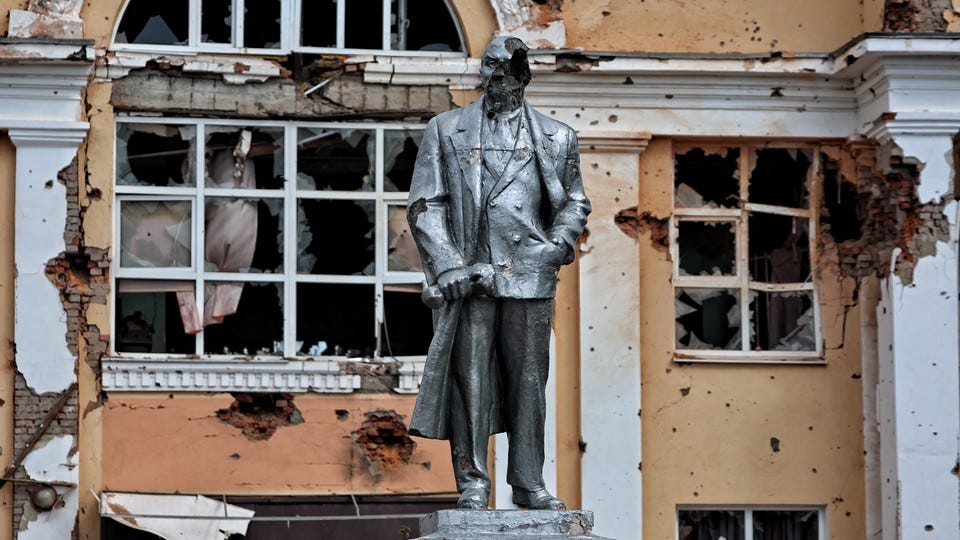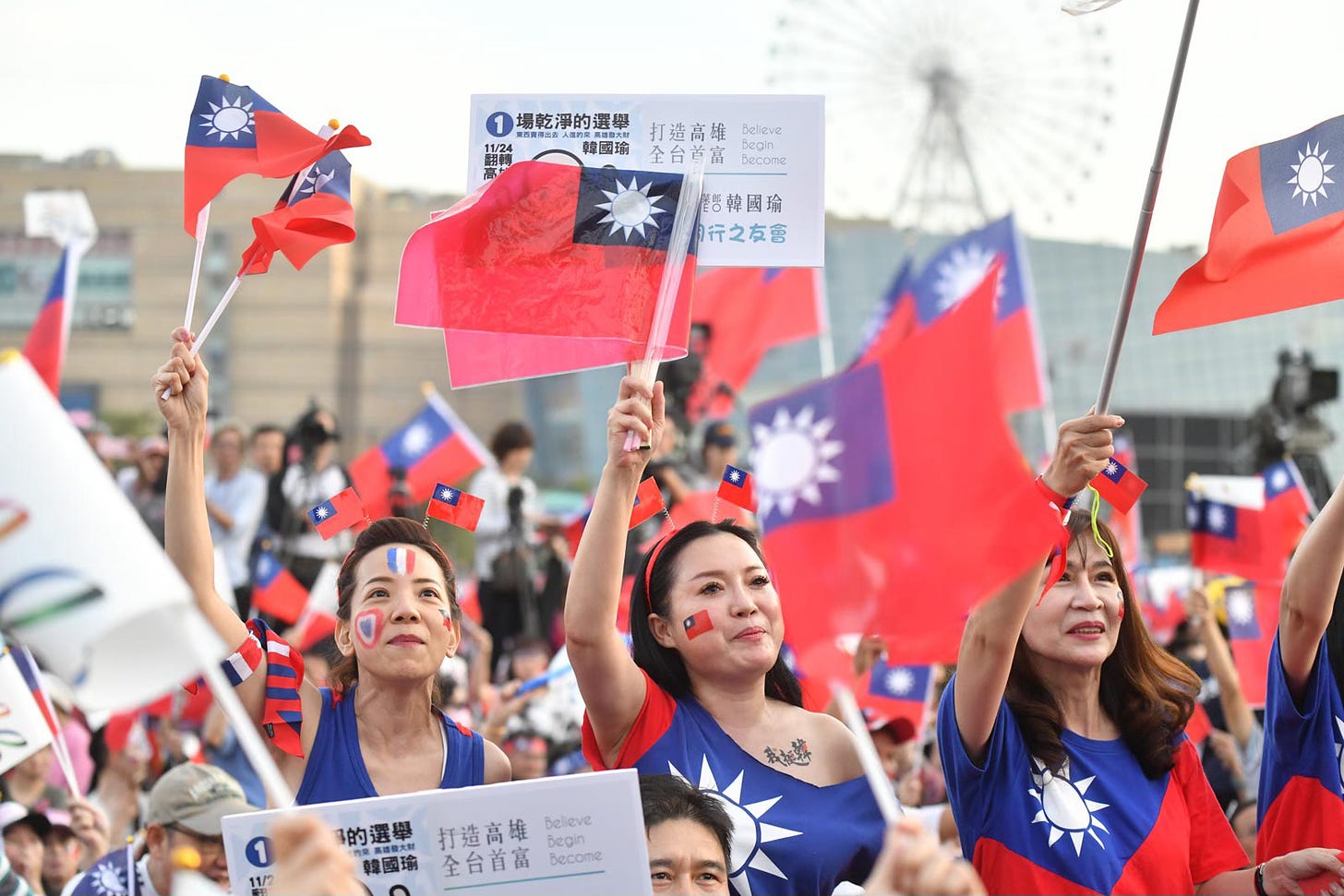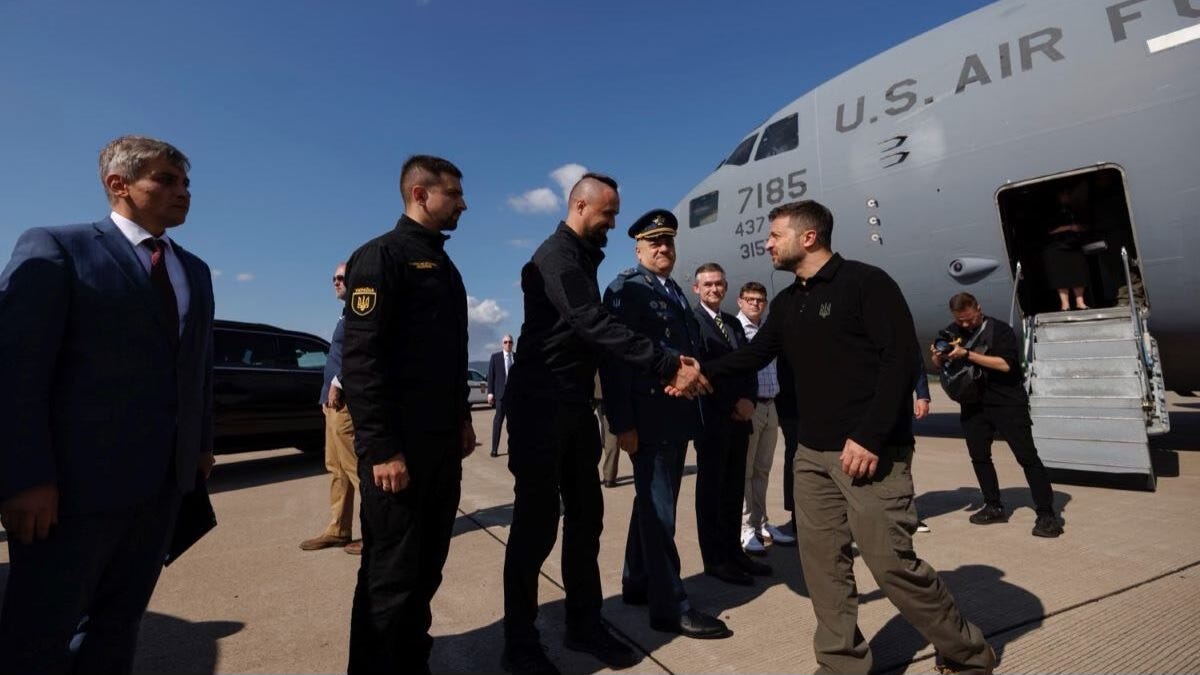Taiwan Title
What is sovereignty when it depends on unreliable and even non-committal policies from Washington, which can change significantly from one president to the next?
Featured contributor Prof. Josef Gregory Mahoney joined #cgtn Radio "World Today" to discuss #taiwan leader Lai Ching.te emphasizing "Taiwan sovereignty" in a recent speech.
A long discussion, some talking points:
Sovereignty is a provocative word, but what is sovereignty without independence?
What is sovereignty when it depends on unreliable and even non-committal policies from Washington, which can change significantly from one president to the next? Taiwan is not a sovereignnation. lt's not independent. lt doesn't have anindependent #foreignpolicy. The countries that do recognize Taiwanwhich you can count on two hands, dwarf in comparison to the 180countries and all the international organizations that don't recognizeTaipei but adhere to the one-China policy promoted by #beijing.
It's rather clear that Lai is talking out of both sides of his mouth, but this has always been case with #dpp ideologues. On the one hand, the purpose of the DPP is to agitate rhetorically for independence. On the other hand, this is not only impossible vis-à-vis China, it's also impossible vis-à-vis whoever decides to support Taiwan. In short, if Taiwan makes its relations with the mainland worse, this means it will have to submit to the hegemony of another powerful country to survive, which isn't real independence and also risks destruction. The purpose of the DPP is to dream of something it can't have, and realise simultaneously that taking real steps in that direction would only produce a nightmare.
Lai asserts that only Taiwan's people should decide their future. ls it fair to exclude the voices of those on the Chinese mainland when considering the future of the Taiwan region?
First, he should be aware that his future is already being determined byAmericans. Do American's support a presidential candidate who wants amore aggressive stance on Taiwan? Will Americans line up to die forTaiwan? Will US businesses destroy their markets in #china? Secondmainlanders by the milions are ready to to go to war to preventindependence, so they will also decide Taiwan's future. And third, theDPP didn't win most of the votes in the last elections, so if the futureshould be decided by Taiwan, then it's a future that most in Taiwan havealready decided doesn't include independence.
Lai has been criticised of trying to "internationalize the Taiwan question'by seeking support from external forces. Will this backfire?
He's not the first DPp leader to do this but he is the first where majorbackfires are at greater risk of occurring. He can't afford a realindependence, but if some countries start to move in that direction, he'dface mounting risks from the mainland. Previously the DPp could freeride on the self-restraint of the US. The DPp could talk tough and thenblame the US for frustrating its ambitions, ambitions that were neverrealizable anyway. But now the DPp can't count on the US not to take ariskier path, as we're seeing in the Philippines. Consequently, the DPP should be more cautious.
https://www.linkedin.com/in/josef-gregory-mahoney-95481615/

The Only Way the Ukraine War Can End
Russia has to stop fighting.
By Anne Applebaum
In an underground parking lot beneath an ordinary building in an ordinary Ukrainian city, dozens of what appear to be small, windowless fishing boats are lined up in rows. The noise of machinery echoes from a separate room, where men are working with metal and wires. They didn’t look up when I walked in one recent morning, and no wonder: This is a sea-drone factory, these are among the best engineers in Ukraine, and they are busy producing the unmanned vessels that have altered the trajectory of the war. Packed with explosives and guided by the world’s most sophisticated remote-navigation technology, these new weapons might even change the way that all naval wars are fought in the future.
Certainly, the sea drones are evolving very quickly. A year ago, I visited the small workshop that was then producing the first Ukrainian models. One of the chief engineers described what was at the time the drones’ first major success: a strike that took out a Russian frigate, damaged a submarine, and hit some other boats as well.
Since then, the sea drones, sometimes alone and sometimes in combined attacks with flying drones or missiles, have sunk or damaged more than two dozen warships. This is possibly the most successful example of asymmetric warfare in history. The Ukrainian drones cost perhaps $220,000 apiece; many of the Russian ships are worth hundreds of millions of dollars. The military impact is enormous. To avoid Ukrainian strikes, Russian ships have mostly left their former headquarters, in the occupied Crimean port of Sevastopol, and moved farther east. They no longer patrol the Ukrainian coast. They can’t stop Ukrainian cargo ships from carrying grain and other goods to world markets, and Ukrainian trade is returning to prewar levels. This can’t be said often enough: Ukraine, a country without much of a navy, defeated Russia’s Black Sea fleet.
https://www.theatlantic.com/ideas/archive/2024/10/ukraine-war-negotiated-peace/680100/
Russia-Ukraine war: All the proposed peace plans explained
Ukrainian President Zelenskyy has asserted that the plan proposed by Ukraine should be enacted.
By Sarah Shamim
Russia launched a full-scale invasion of Ukraine in February 2022, marking the largest war in Europe since the end of World War II, and fundamentally reshaping global relations and economics, with supply chains and food security disrupted around the planet.
Since then, and especially in recent weeks, Russia and Ukraine have escalated attacks in each other’s territories. Earlier this week, Russian forces grabbed the strategically located hilltop town of Vuhledar in eastern Ukraine.
But alongside the intense fighting, a parallel battle is fast taking shape – over competing peace plans to try to bring the war in Ukraine to an end. Analysis by political scientist Masha Hedburg for Harvard University’s Davis Center for Russian and Eurasian Studies estimates that between March 2022 and July 2024, at least 25 peace plans were put forth.
Ukraine, however, insists that only the peace plan it has pitched is acceptable to it.
So what are the various peace plans, how do they differ – and where do countries stand on them?
China and Brazil’s plan
The meeting on the margins of the UNGA, for the newly formed “Friends for Peace” group was chaired by China’s foreign minister, Wang Yi, and Brazil’s foreign policy adviser Celso Amorim. The meeting was not attended by Ukraine or Russia.
This plan was first proposed by the two countries in May. According to a statement released on the Brazilian government’s website, the plan calls for:
Russia and Ukraine to not expand the battlefield; not escalate fighting; and not carry out provocation.
Resumption of direct dialogue and a push for de-escalation until a ceasefire is achieved. China and Brazil call for an international peace conference recognised and attended by both Russia and Ukraine.
More humanitarian assistance to affected regions.
Nuclear weapons, and other weapons of mass destruction, to not be used.
Attacks on nuclear facilities should be opposed.
Dividing the world into “isolated political or economic groups” should be opposed. Instead, international cooperation on energy, currency, finance, trade, food security and security of critical infrastructure should be supported.
This plan is rooted in a plan that China has advocated from early in the war.
Switzerland, which sent an observer to the meeting hosted by China and Brazil, welcomed their proposal. But the country’s participation and its endorsement of the China-Brazil plan drew criticism from Ukraine.
Ukraine’s Ministry of Foreign Affairs said in a statement that the peace formula suggested by Volodymyr Zelenskyy was “the only way to a comprehensive, just and sustainable peace”. Zelenskyy has long asserted that Russia must be “forced into peace” and negotiation attempts with Moscow would be futile.
In June, Switzerland had hosted a peace summit based on Zelenskyy’s peace plan – a conclave that was attended by neither Russia nor China. Brazil, which participated in that summit, did not sign the declaration released at the end of that meeting.
Ukraine’s plan
Zelenskyy’s peace plan is different from the five-point victory plan that he discussed with US President Joe Biden during Zelenskyy’s visit to Washington and New York last month.
The peace plan has 10 pillars:
Safety around Europe’s largest Zaporizhzhia power plant, which is occupied by Russia, be restored.
Ukraine’s grain exports be protected.
Ukraine’s power infrastructure, which has been damaged by Russian attacks, be restored. Price restrictions be placed on Russia’s energy resources.
All prisoners, as well as all children and adults deported to Russia, be released.
Ukraine’s territorial integrity be restored and reaffirmed by Russia according to the UN Charter.
Russian troops to withdraw and hostilities to be stopped. Ukraine’s state borders with Russia to be restored.
A special tribunal be established to investigate Russian war crimes.
The environment be protected and water treatment facilities be restored.
Prevention of escalation of conflict and guarantee of security for Ukraine in the Euro-Atlantic space to be made.
A document to be signed by both parties confirming the end of the war.
Russia’s plan
But Ukraine is not the only party to the war with a peace plan. Russia, the aggressor, has its plan for peace too.
In June, days before the Ukraine-sponsored peace summit in Switzerland, Russian President Vladimir Putin laid his plan for a ceasefire during a meeting with Russian ambassadors. He asked:
Ukraine to withdraw troops from territories partially occupied by Russia – Kherson, Zaporizhzhia, Donetsk and Luhansk.
Ukraine to give up on joining NATO before peace talks start.
Ukraine and the US both slammed this plan. Ukrainian presidential adviser Mykhailo Podolyak deemed it “offensive to common sense”.
Zelenskyy told Italian broadcaster Sky TG24: “These messages are ultimatum messages. It’s the same thing Hitler did, when he said ‘give me a part of Czechoslovakia and it’ll end here.'”
US Defense Secretary Lloyd Austin said Putin “is not in any position to dictate to Ukraine what they must do to bring about peace”.
Africa’s peace plan
In June 2023, leaders of seven countries in Africa separately met with both Zelenskyy and Putin. The delegation consisted of the presidents of South Africa, Egypt, Senegal, Democratic Republic of the Congo, Comoros, Zambia and Uganda.
This proposal comprised 10 points but was never put on paper. The main elementswere:
Russia and Ukraine’s sovereignty to be recognised.
Unhindered grain exports to be continued.
Fighting to be de-escalated and negotiations to commence.
Prisoners of war to be released and humanitarian aid to be increased.
Both Putin and Zelenskyy indicated that the plan would not work.
Zelenskyy rejected the plan, saying peace talks would only be possible after Russia withdraws.
“To allow any negotiations with Russia now while the occupier is on our land is to freeze the war, to freeze everything: pain and suffering,” he told a news conference.
India’s involvement in peace efforts
On September 23, Zelenskyy met India’s prime minister, Narendra Modi, for the third time this year.
Zelenskyy wrote in a post on his X account that “implementing the Peace Formula” was discussed in the meeting in New York.
Indian Foreign Minister Subrahmanyam Jaishankar said earlier, on September 10: “In this conflict, we don’t believe that a solution will come from the battlefield, so we do think that negotiations are the only way forward, at some point there has to be negotiations.”
He added that “suggestions have been made from time to time” for India to host a peace conference on the issue.
However, the South Asian country has not put forward a peace plan of its own and, despite the recent bonhomie between Modi and Zelenskyy, New Delhi and Kyiv have sharp differences over how to work towards peace in Ukraine.
Though India participated in the Switzerland peace summit, it refused to sign the concluding document, which was based on Zelenskyy’s peace plan that India has not endorsed explicitly. India insisted that it could only agree to a blueprint for peace emerging from talks in which Russia was a participant too.
In August, when Modi visited Kyiv, becoming the first Indian PM to visit Ukraine since it became an independent country following the collapse of the Soviet Union, Zelenskyy questioned India’s credentials to host a peace summit when it had not accepted the Swiss conclave’s outcome.
Why does Ukraine want only its plan to be enacted?
“The problem is with the term ‘negotiations’,” John Lough, an associate fellow at the UK-based think tank Chatham House’s Russia and Eurasia Programme, told Al Jazeera.
“The Russians are pursuing a maximalist goal – expansion of territory,” he said, adding that Russia also aims to unseat Zelenskyy and replace him with a “biddable leader”. This, he said, is aimed at returning Ukraine to Russia’s sphere of influence.
“Putin simply wants to negotiate the terms of Ukraine’s surrender. This is what he means when he says Russia is willing to negotiate.”
Lough explained that Ukraine, on the other hand – for all its tough rhetoric – is fundamentally “looking for a compromise that will provide the unoccupied part of the country with Western security guarantees”.
“For Ukraine, this is a question of preserving its sovereignty,” Lough said. “The Chinese/Brazilian peace plans are just Russian proposals in different packaging.”





